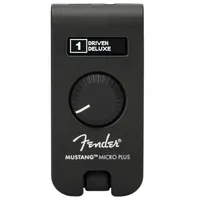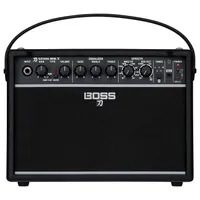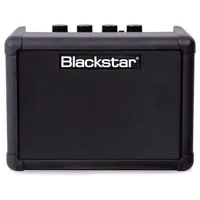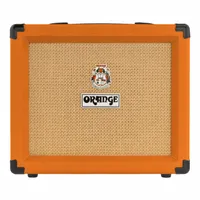Best beginner guitar amps 2025: my top picks from over a decade working in music retail
After nearly ten years working in a busy high-street music store, I’ve seen which beginner amps truly deliver, offering the best value, most useful features, and long-lasting popularity from brands like Blackstar, Fender, Positive Grid, and more
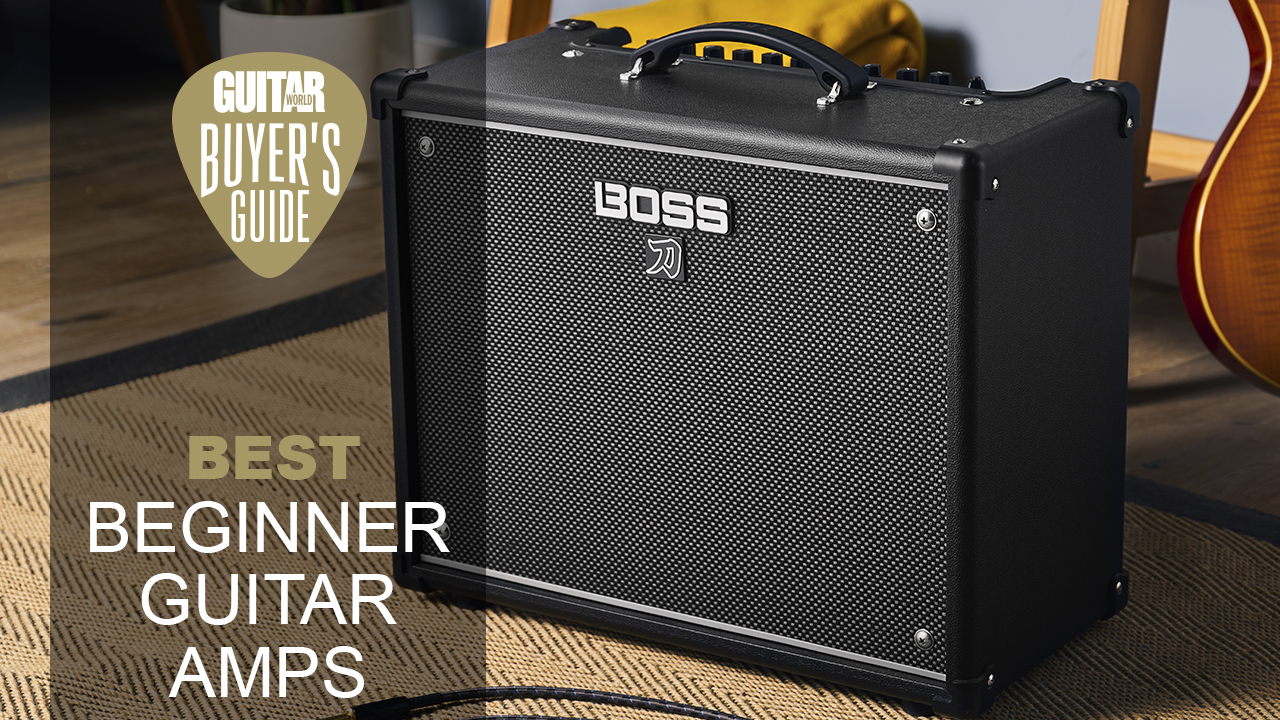
Right after picking up your first electric guitar, the next essential piece of the puzzle is a beginner-friendly amp. And while I vividly remember my own first amp, complete with ear-splitting tones and barely usable built-in effects, I also remember how exciting it felt to finally plug in and make some noise. That’s why I’ve put together this guide to the best beginner guitar amps – to help you skip the guesswork and avoid the common mistakes many of us made early on.
Beginner amps have come a long way since I was a wide-eyed beginner; the overall quality, range of features and choice of options have never been better. To compile this guide, I’ve called upon my two decades of guitar playing experience, alongside the ten years I spent working in a busy high street guitar store helping beginners choose their first amplifier.
I’ve hand-picked what I think are the best beginner amps currently on the market. I’ve personally played each of these models countless times, and I’ve included detailed reviews covering everything from build quality to features and tones. To give you an even better sense of what these amps can do, the Guitar World team have recorded handy demo videos, showcasing tones, amp voices and built-in effects.
Currently, my favorite of the bunch is the ever-popular Boss Katana 50 Gen 3. Perhaps the best-selling guitar amp in the world, it’s a dream start for any beginner guitarist. With a wide selection of amp voices, a generous spread of built-in Boss effects, and an incredibly easy-to-use control panel, it’s the perfect introduction for new guitarists. However, if you’re on a tighter budget, take a look at the Blackstar ID:Core 10 V4. It’s versatile, has plenty of volume for home practice, and comes loaded with heaps of usable effects.
On the hunt for guitar gear savings this Black Friday? Shop our handpicked selection of the best Black Friday guitar deals.

“I've been playing electric guitar for over 20 years, and there are few amp brands I haven’t plugged into. As a Guitar World writer, I’ve tested countless beginner amps specifically to help new players get started. I also work in instrument retail, where I spend every day listening to beginners, assessing their needs, and recommending the best beginner amps to suit their budget, experience level, and musical taste.”
Read more about how I tested the amps for this guide here
My top picks
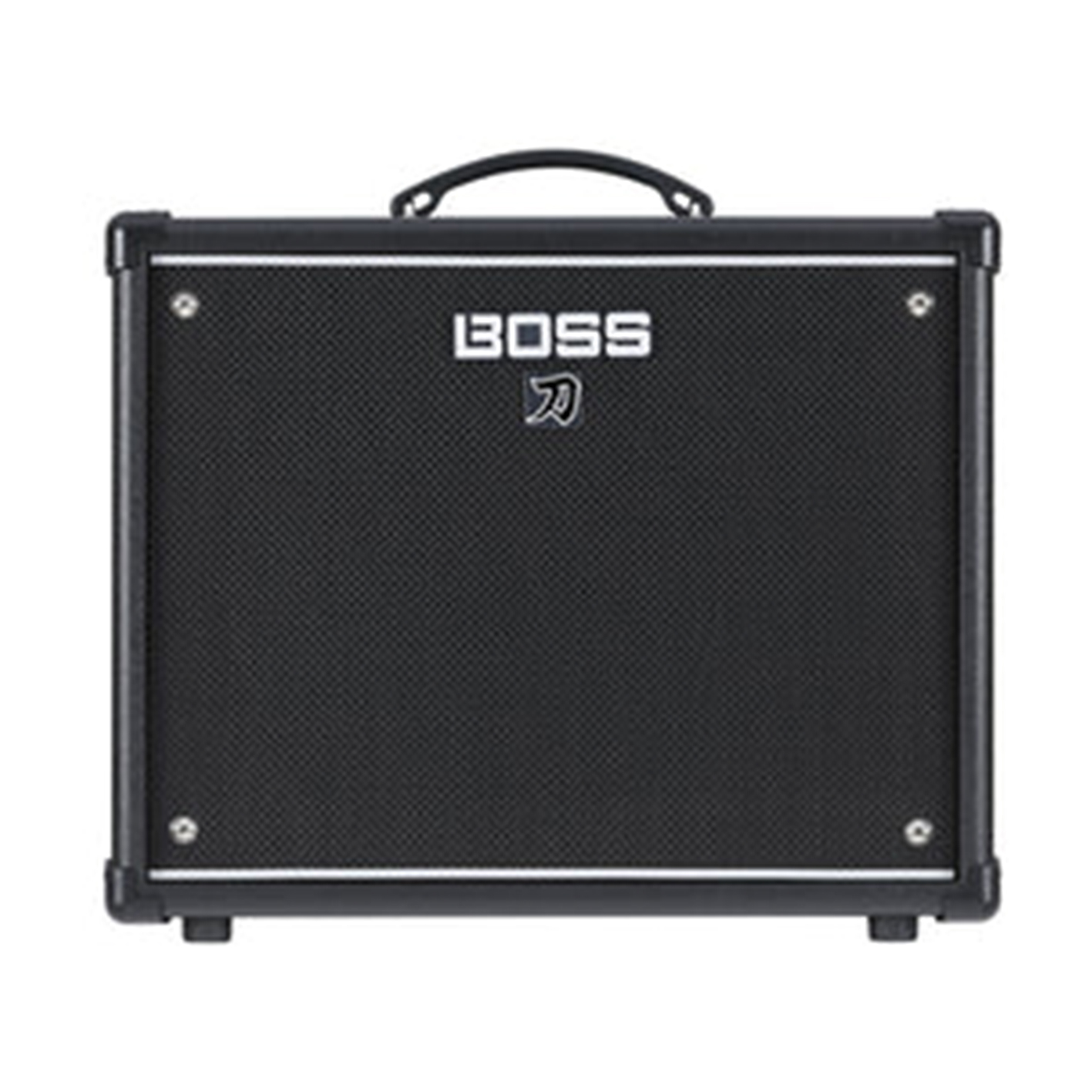
I’ve seen the Katana consistently outperform other amps in this category and the Gen 3 Katana 50 remains the best overall amp for beginners. With 15 onboard effects, 6 amp voices, and a power control all rolled into an intuitive layout, this is a great-sounding amp that will grow with you.
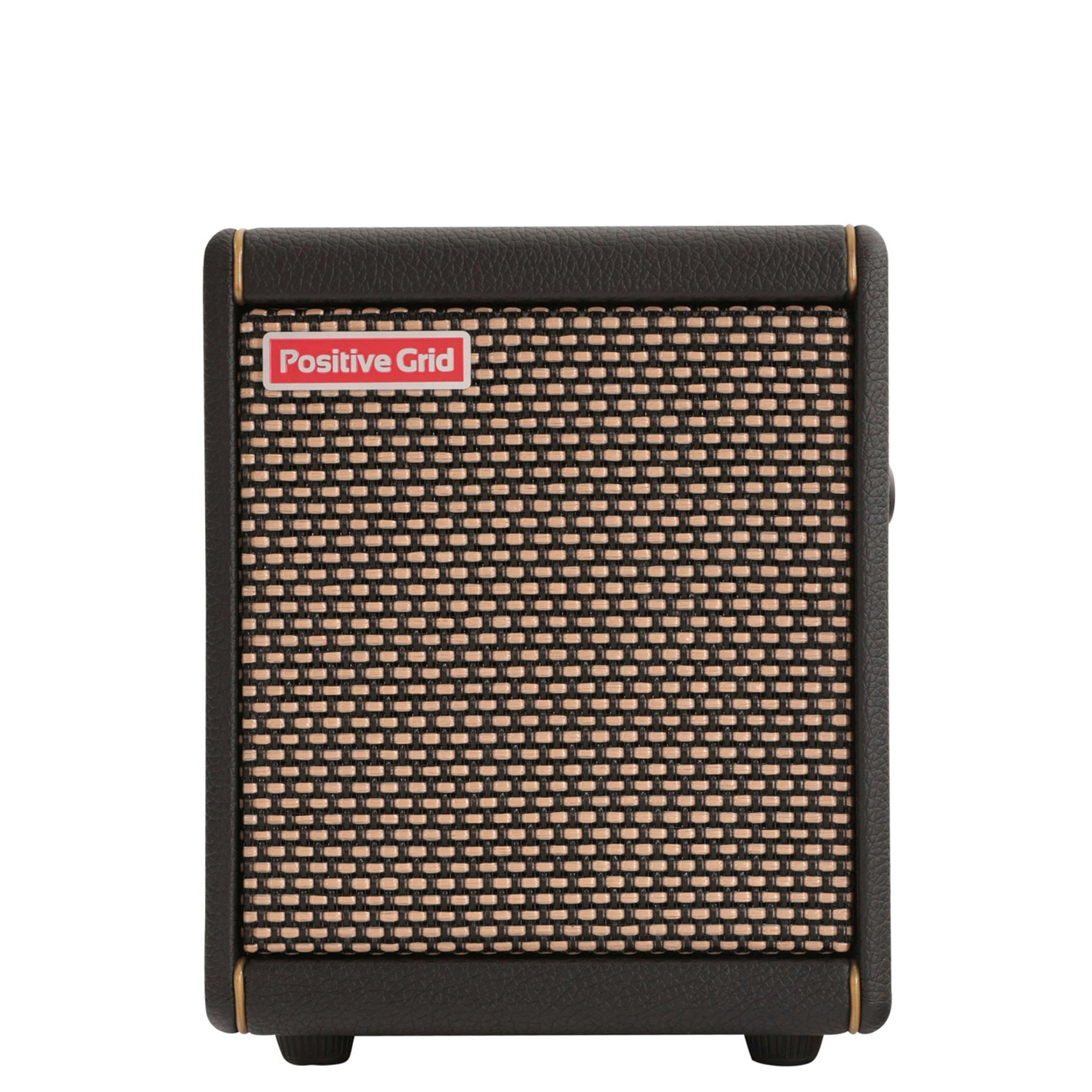
If you want a compact option that’ll fit neatly on your desk, the Spark Mini is your best bet. With an 8-hour battery life, heaps of amp voices and effects through the Spark app and Bluetooth for jamming along to music, it is my recommendation for beginners needing something small but mighty.
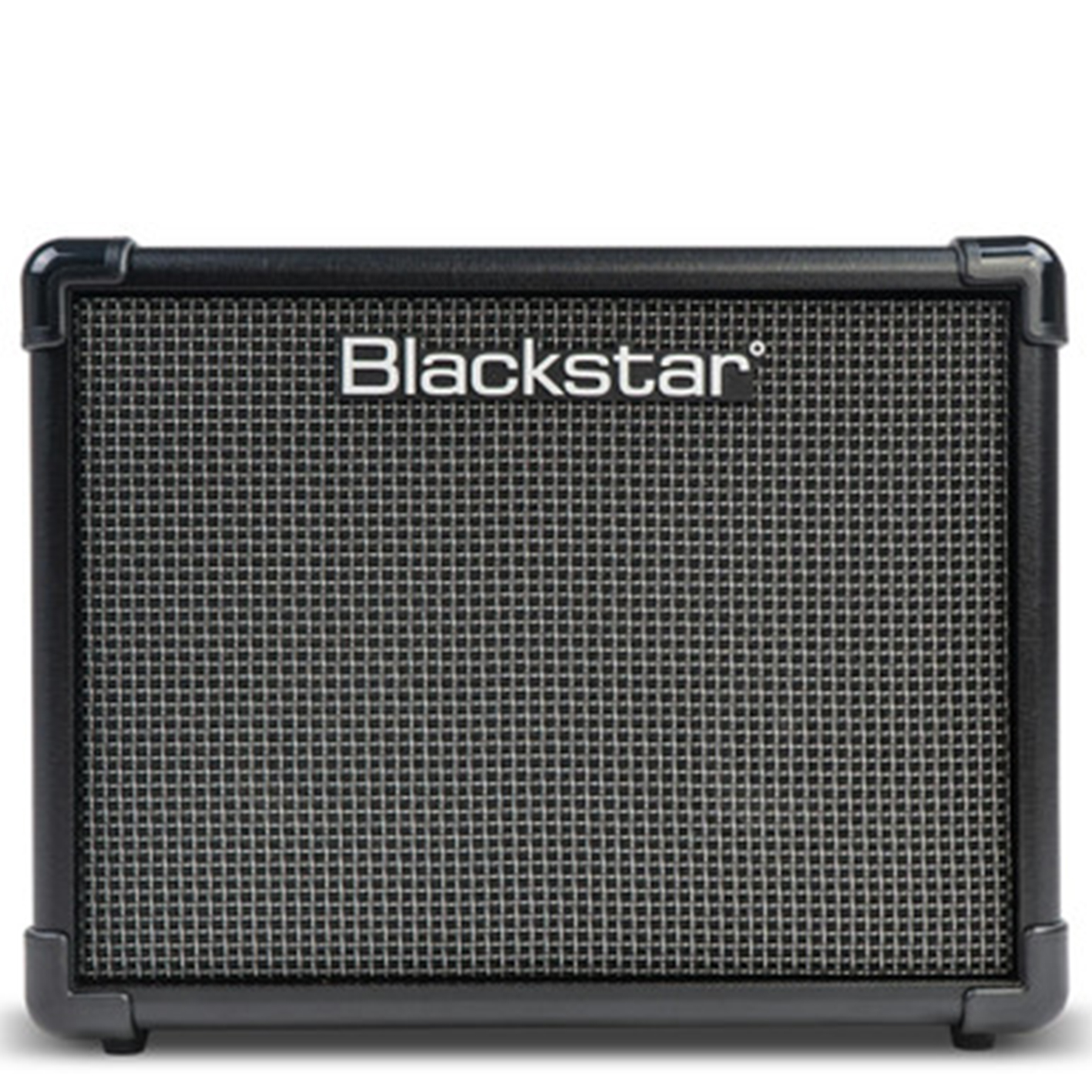
The Blackstar ID:Core Stereo 10 V4 is my top pick for beginners on a tighter budget. It’s lightweight, compact, and packed with six amp voices and 12 solid effects. There’s even a built-in tuner. While 10 watts won’t suit live jams, it’s perfect for home practice.
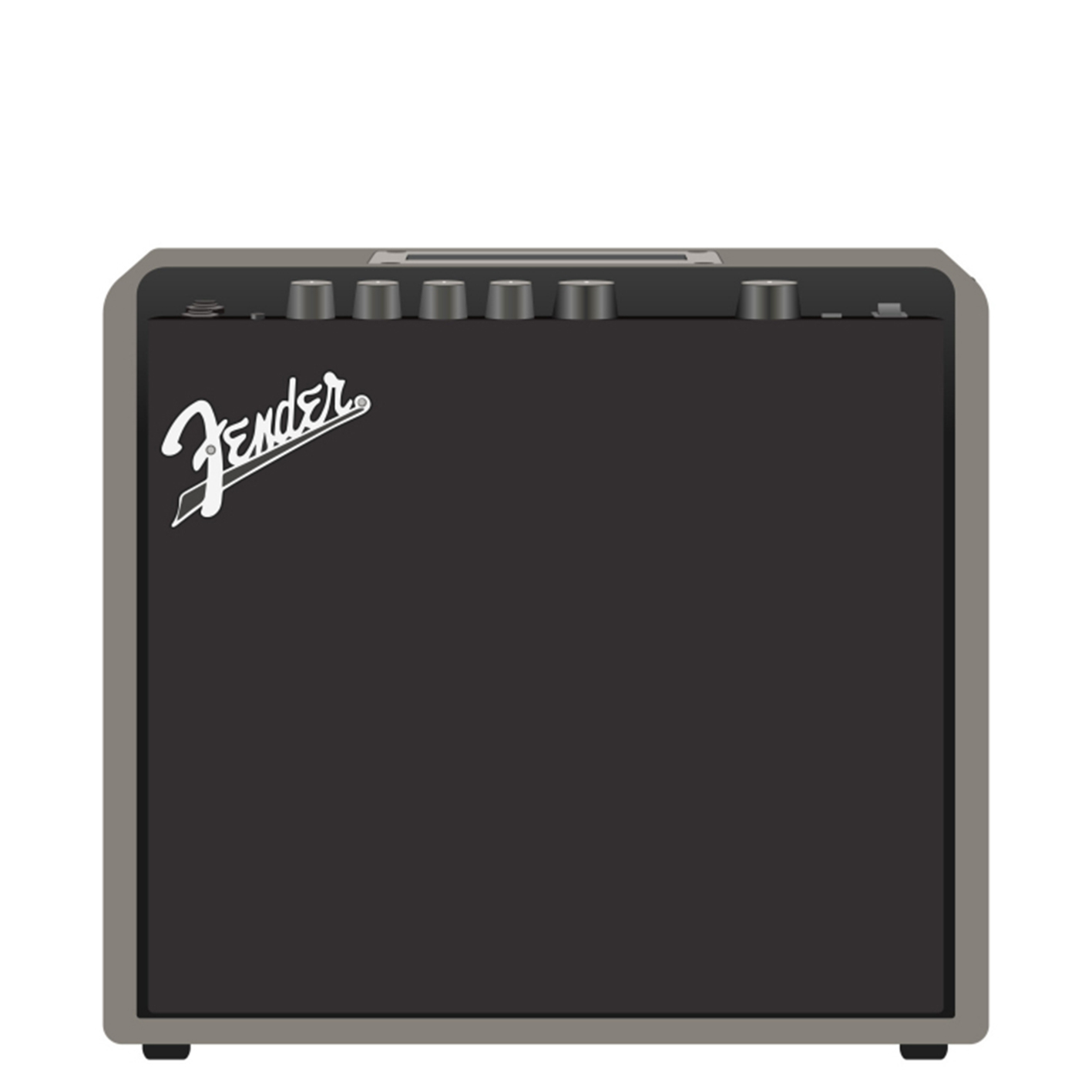
The Fender Mustang LT25 is packed with tones and presets that make learning fun. I love the classic Fender clean tones and how easy it is to recall saved sounds. It’s loud for its size and full of effects, though the screen-based controls won’t suit everyone.
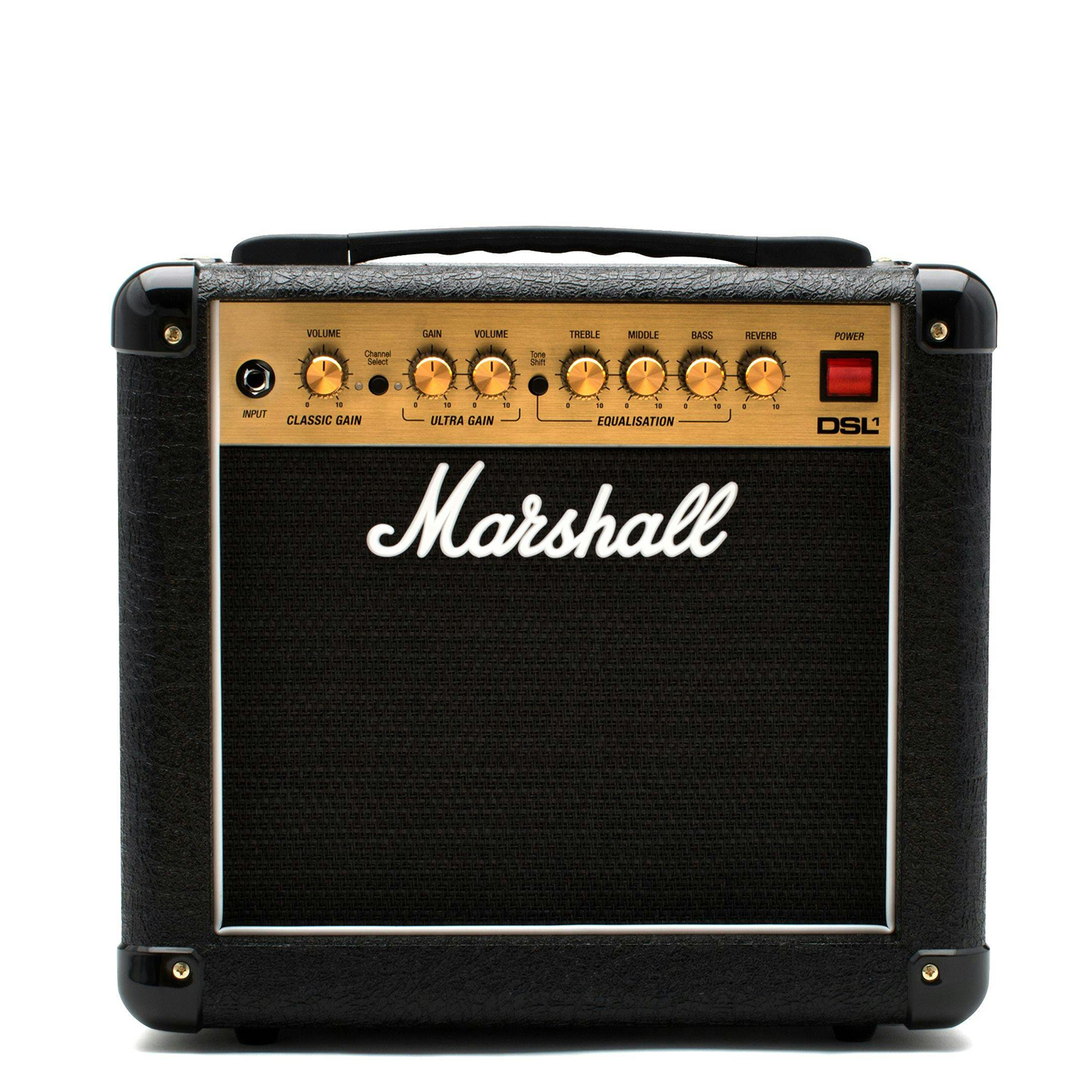
If you want real tube tone at home volume, this is the one. Simple controls, great classic and high-gain channels, and a surprisingly versatile reverb. It’s loud for 1 watt, so the power control is a welcome touch. There’s no effects or modeling, but it’s all about classic tube tone and simplicity here.
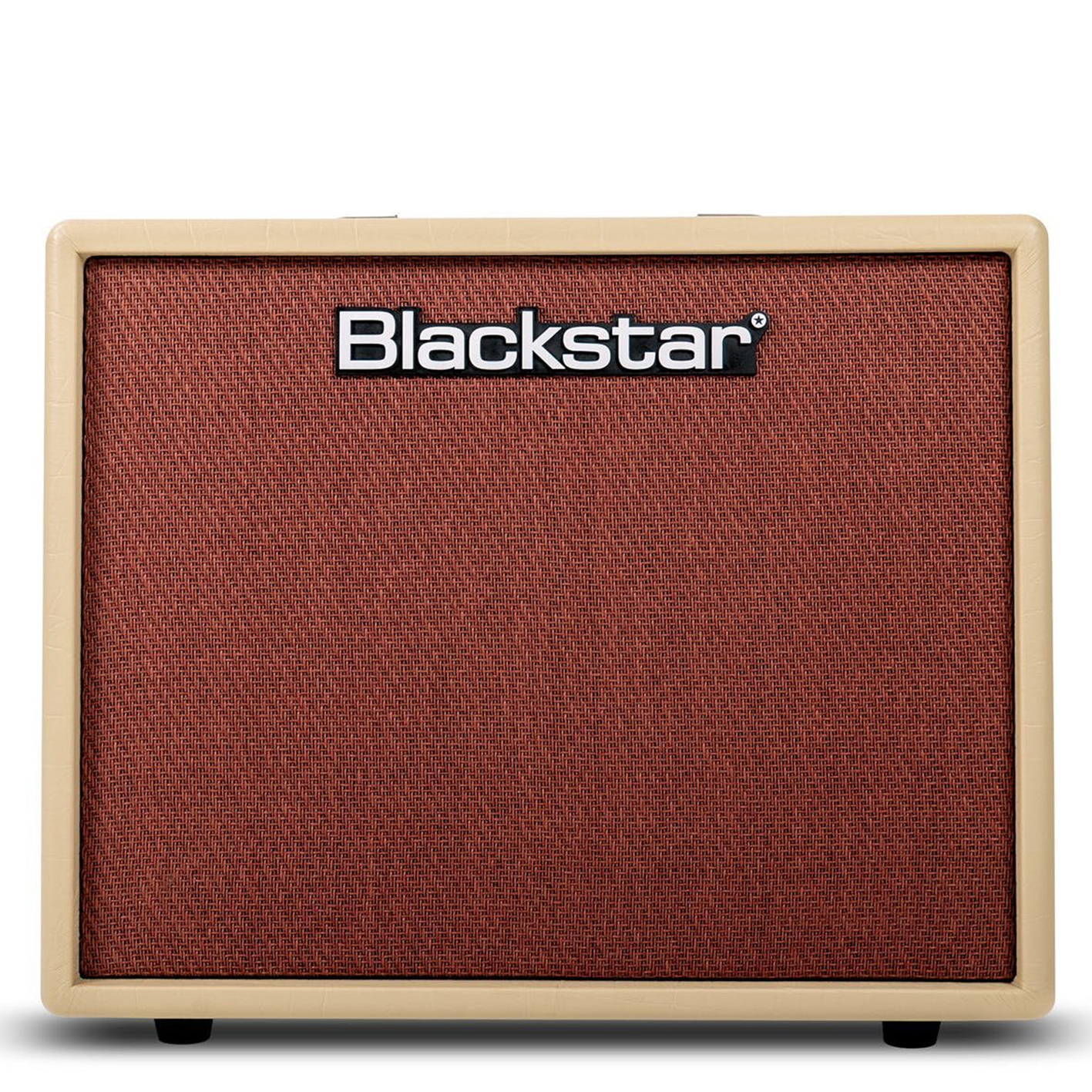
The Debut 50R is my top solid-state choice for a few reasons: it’s a fantastic pedal platform, it has a streamlined control panel, there’s loads of volume on tap, plus it has a selectable 5-watt mode and is very well-balanced. On top of that, it’s super affordable.
Best overall
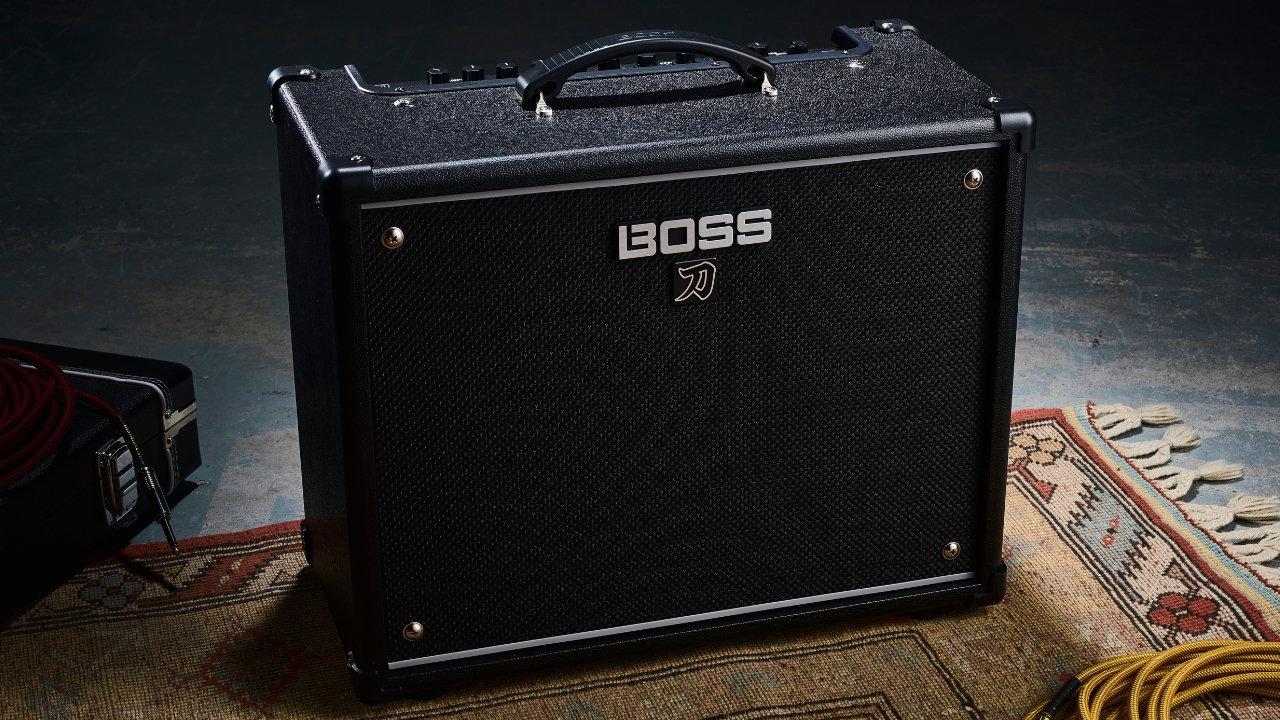
Specifications
Reasons to buy
Reasons to avoid
✅ Buy if you want a beginner amp that does it all: From its excellent amp models, superb Boss quality effects, recording capability, and with enough power to gig, there's little the Katana can't do.
❌ Avoid if you prefer simplicity: There's a lot of features here, which could be overwhelming for the beginner player who just wants something simple to use.
Build quality ★★★★★
Key features ★★★★½
Performance ★★★★½
Overall ★★★★½
What is it? Since releasing the original Katana in 2016, this amplifier quickly became the most requested, and my most suggested, during my day job working in a guitar store. Now on its third generation, the Boss Katana 50 goes from strength to strength, offering beginners the ultimate amplifier to explore tones, effects, and volume.
Build quality: The Katana 50 blends two important features: sturdy and reliable build quality, yet relatively lightweight. The MDF cabinet does a great job of keeping the amp portable, and it only weighs around 11kg. Having unboxed plenty of Katanas in my time, I can safely say the weight has never been an issue. That doesn’t detract from its durability, either. In my experience, it’s rare for a Katana 50 to develop a physical fault. Everything from the reassuring handle to the tactile control knobs add to the amp’s sense of quality.
Key features: As for features, the Katana is loaded. There are six amp voices on offer, each with a variation, meaning you can go from classic rock to power violence with the turn of a knob. This is ideal for beginners, who often bounce between genres while learning.
Although there are up to 60 effects on tap via the Boss Tone Studio app, the amp itself carries 15 onboard, offering learners the chance to experiment with different sounds. Each time I have demoed the effects section to a beginner, their eyes light up at the chance to sound like their heroes. There’s also a power control, so you can play quietly at 0.5 watts for late-night jams, or crank it to the full 50 watts when jamming with friends.
Performance: While the Katana 50 Gen 3 sounds feature-packed on paper, it never feels overwhelming in practice. That’s thanks to the intuitive control panel, with amp voices on the left through to the power control on the right, and LED indicators highlighting what is active, everything is easy to understand.
I’ve sat many a fresh-faced beginner in front of a Katana, and after a quick demo, 95% of them pick it up right away. Sure, the Boss Tone Studio app may be a touch overwhelming to start with, but it is a great addition to explore once you get more confident with the hardware.
Final verdict: Overall, the Boss Katana 50 Gen 3 is the best amplifier for beginners right now, thanks to the breadth of tones and effects on offer. It encourages learners to keep playing by helping them sound like their favorite artists, while an intuitive layout and solid build means you’ll have an amp that will grow with you for years.
WATCH OUR DEMO VIDEO:
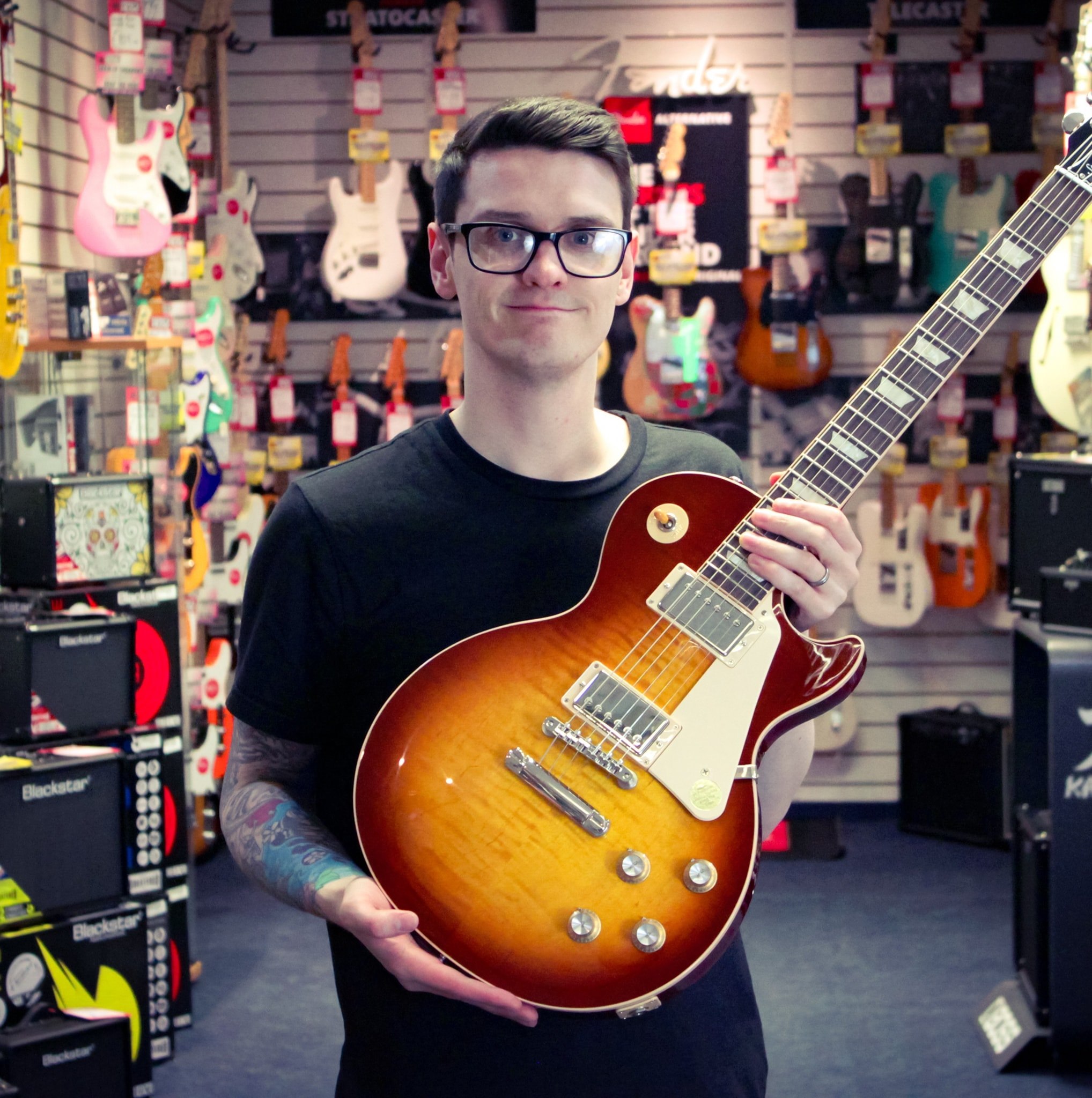
"Boss hasn’t tried to completely reinvent its popular practice amp line – because it didn’t need to. Katana 50 MKIII keeps the same great aesthetic, usability and spirit of the original while pushing the series forward with upgraded tones and functionality."
Read more: Boss Katana 50 Gen 3 review
Best compact
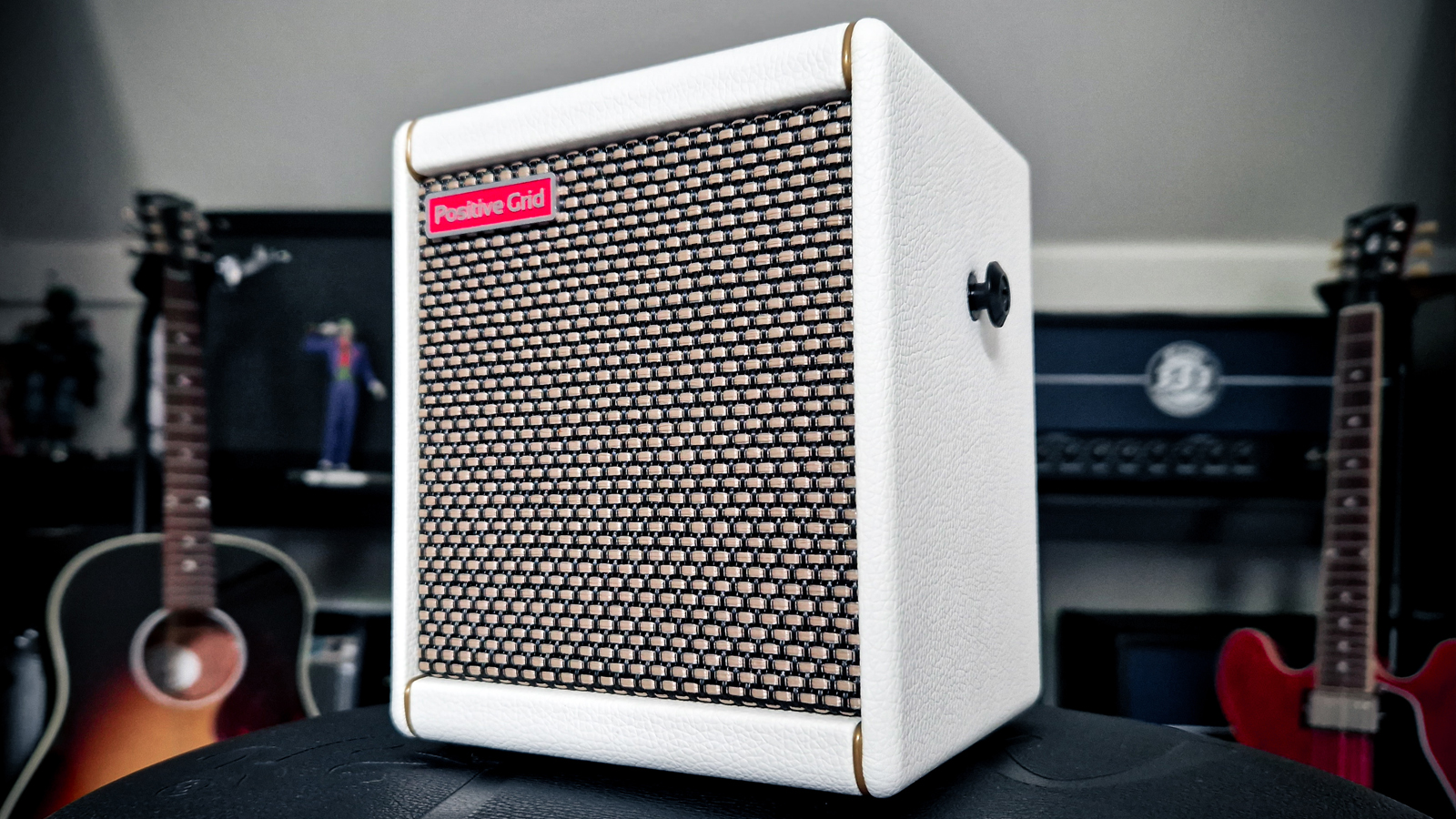
Specifications
Reasons to buy
Reasons to avoid
✅ Buy if you're short on space: The tiny footprint of the Spark Mini means it will fit into even the smallest of bedrooms, and you can take it wherever you go too.
❌ Avoid if you want to play live: This is a pure practice amp due to its size, so won't suit those who want to eventually play live or jam with others.
Build quality ★★★★½
Key features ★★★★½
Performance ★★★★★
Overall ★★★★½
What is it? Positive Grid’s line of Spark amplifiers has been a familiar sight in the digital modeling world for a few years now, and the company is going from strength to strength. Championing deep tone editing through their proprietary Spark app, the Spark Mini offers a host of amp voices, effects and music streaming in an ultra-lightweight, battery-powered combo. For the beginner looking for a small and portable solution, the Spark Mini should be your go-to option.
Build quality: Like most guitarists, my first introduction to Positive Grid was the Spark 40 back in 2019, and since then I’ve kept a keen eye on their frequent releases. The Mini was released in 2022 and wears the hallmarks of the original well, with black tolex, gold detailing, and a detachable handle.
Unlike its predecessor, the control panel has been simplified and houses only three controls: preset selection, guitar volume, and music streaming volume. The Bluetooth pairing, USB-C port, power button, AUX, and headphone input are all housed neatly on the back. It’s tidy, well laid out, and cuts out any unnecessary faff to keep the amp as compact as possible.
Key features: With such a simple control panel, you won’t be surprised to hear that the Mini’s features are best unlocked through the Spark app. There are four amp voices pre-loaded, but a whopping 33 amp models and 43 effects are accessible via your device, alongside a huge range of user-created tones via the Spark ToneCloud. The four channels on the amp are programmable too, so you can choose exactly what you want to hear. I’ve always felt that PG nails amp modeling, with the Mini being no exception. The varied tones from clean to classic crunch and high-gain amps offer beginners a great opportunity to sound great while learning.
Being Bluetooth-enabled, the Mini can double as a music streaming speaker, too. You can play guitar at the same time, enabling you to jam along to the songs you’re learning, pick out backing tracks to improve soloing, or simply use it to listen to your favorite bands in downtime. Smart Jam is also worth checking out in the app for learners. Cleverly, this feature can generate a drum and bass backing track based on what you play, allowing you to hone your timing and rhythm.
Performance: The first thing I noticed with the Spark Mini is its volume. This little guy packs a punch. The 2-inch speakers are considerably small, which is unsurprising in an amp of this size, but the low-end is pleasantly generous. The bass response is aided by the passive radiator and rubber feet, which PG designed to maximise low-end performance. Otherwise, since the Mini has been tuned to stream music, playing guitar through it delivers plenty of mid-range and high-end clarity. Overall, it’s balanced very well.
In terms of dialing in a tone, the Mini is extremely reliant on the app, as there are no editing options on the physical amp itself. Although I love scrolling through ToneCloud and playing other guitarists’ patches, beginners may prefer something more immediate. Bear that in mind if you don’t want to pair your phone while practicing.
Final verdict: Overall, the Spark Mini is the best compact amplifier on my list. With an 8-hour battery life, a wealth of amp voices and effects via the app, plenty of beginner-friendly jamming features, and a very well-balanced tone for its size, the Mini is a brilliant choice for beginners looking for a compact option.
WATCH OUR DEMO VIDEO:

"A super-compact and portable digital combo with all the smart modeling fun of its larger sibling, the Spark MINI is a take-anywhere amp with so many inspiring sounds and helpful functions that it simply makes you want to play guitar more."
Read more: Positive Grid Spark Mini review
Best budget
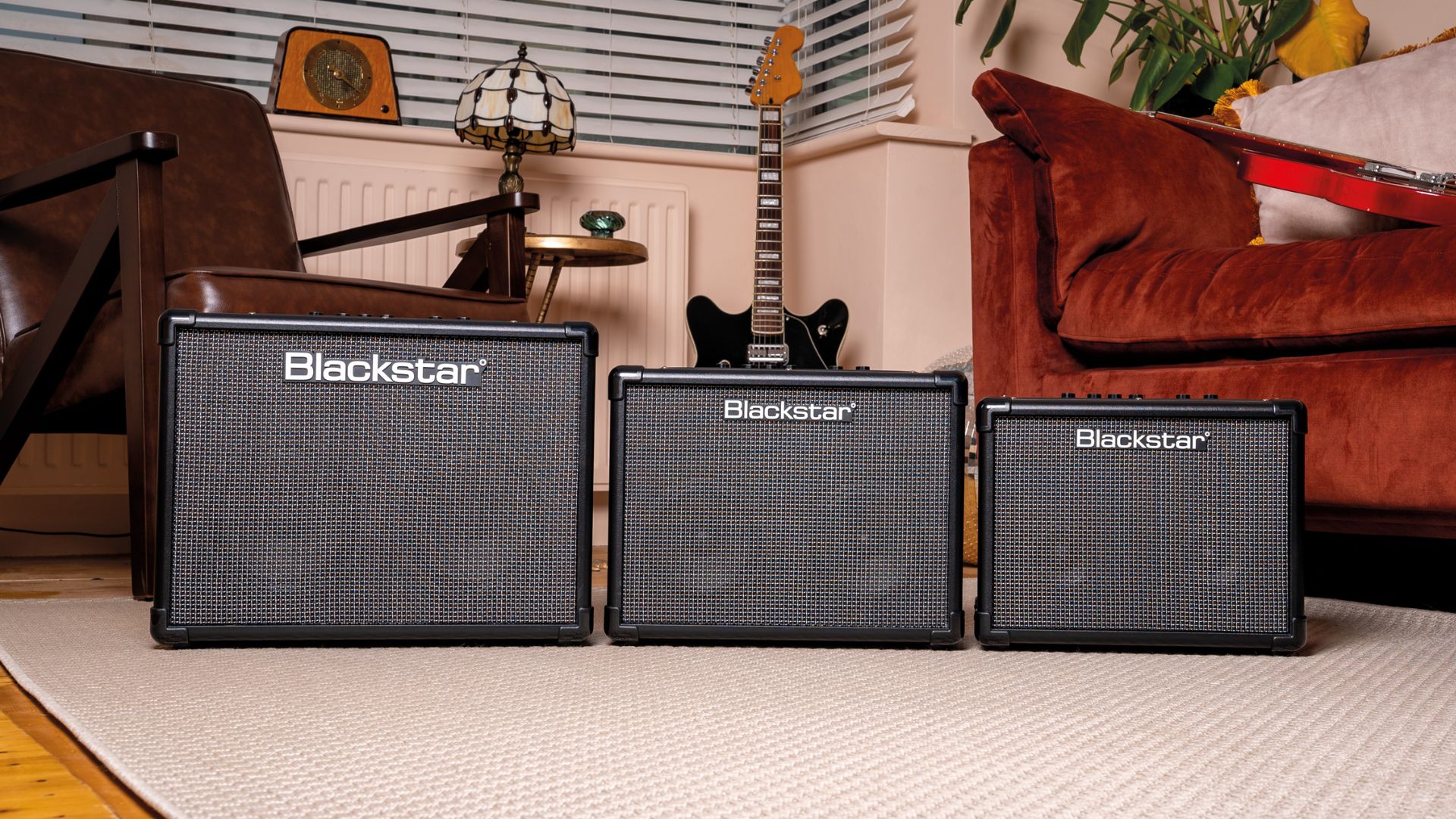
Specifications
Reasons to buy
Reasons to avoid
✅ Buy if you want value for money: Considering it comes in below $/£149, you get a lot of guitar amp for your money with this excellent offering from Blackstar.
❌ Avoid if you like lots of features: Other amps on this list do feature a lot more in terms of amp models and effects, granted they will cost you more though.
Build quality ★★★★★
Key features ★★★★½
Performance ★★★★½
Overall ★★★★½
What is it? Blackstar was created by ex-Marshall employees, so the company has plenty of heritage in its ranks. One of Blackstar’s most popular ranges – and one that is a great choice for beginners looking to save a bit of money – is the ID:Core series. Now in its fourth iteration, the Stereo 10 packs plenty of amp voices and effects into a compact and lightweight package.
Build quality: Weighing only 3.7kg, the Stereo 10 is light enough to take to lessons or your friend’s house for a jam. Inside are two relatively small 3-inch speakers, and the cabinet is compact enough to push it into desktop amp territory. I’ve found the ID:Core range is great for younger learners since it’s so lightweight and will fit into smaller bedrooms without taking up too much space.
Key features: Blackstar has equipped this amp with six different amp voices, from clean tones to super-crunchy channels, giving learners a great platform to experiment with classic amp sounds. There are 12 effects in total, with four variations each of delay, reverb, and modulation. Although not as extensive as others on this list, it covers the essentials pretty thoroughly.
New to the V4 series is a power control with options for either 10 watts or 1 watt, very useful depending on the time of day you’re practicing. Another handy feature that beginners have fed back to me on is the built-in tuner, which means one less thing to buy when building your first guitar rig.
Performance: The Stereo 10, unsurprisingly, has 10 watts of power, which is more than enough for indoor practice, though it may not deliver quite enough juice for jamming with friends at high volumes. Every time I plug into the Stereo 10, I’m able to dial in a variety of tones, from chorus-y, The Cure-like cleans, to Title Fight-style overdrive, thanks to the different amp voices and effects on offer. That said, one thing I have noticed beginners sometimes struggle with is the effects section, as the light-coded on/off functionality can be a little confusing at first.
Final verdict: The ID:Core Stereo 10 from Blackstar is a super affordable practice amplifier with enough amp voices and effects for beginners to find inspiring and valuable. Although you may outgrow its 10 watts relatively quickly, it’s more than enough to get you up and running and makes for a fantastic practice tool in the bedroom.
WATCH OUR DEMO VIDEO:

"The ID:Core V4 combos are obviously ideal first amps, loaded with features for hours of fun and inspiration, while the sound quality means they’re suited to players at all levels."
Read more: Blackstar ID:Core Stereo 10 V4 review
Best modeler
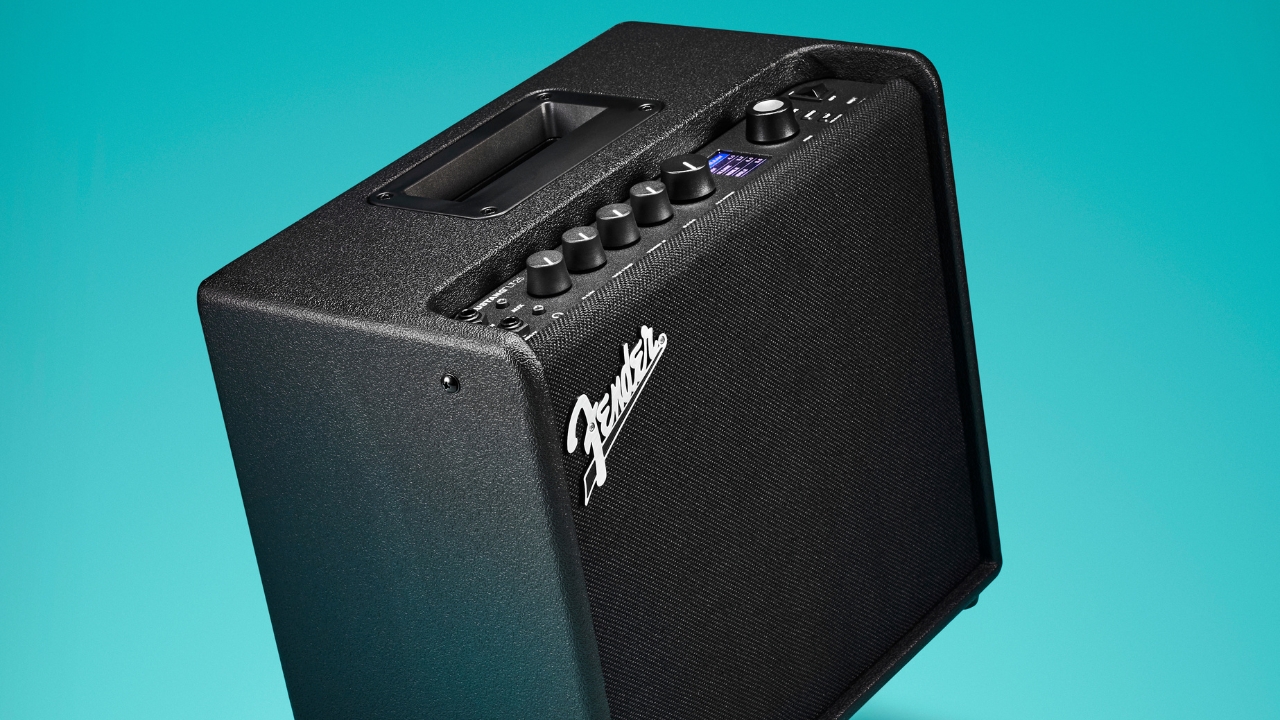
Specifications
Reasons to buy
Reasons to avoid
✅ Buy if you want versatility: With 20 amp voices and 25 effects, the Mustang gives you lots of different sounds in a relatively compact package.
❌ Avoid if you like a big speaker: The 8-inch speaker is great for saving space, but if you want to jam along to songs you'll find it doesn't quite reproduce the full spectrum of sound.
Build quality ★★★★★
Key features ★★★★½
Performance ★★★★½
Overall ★★★★½
What is it? The smallest option in Fender’s Mustang amplifier range, the LT25 is the iconic brand’s popular entry into the beginner amp market. With heaps of usable presets and a wide array of amp voices modeled from Fender’s own catalog and beyond, there is plenty here for beginners to sink their teeth into.
Build quality: What I love most about the build is the aesthetics. The LT25 is one sleek-looking amplifier and I’m a big fan of the blacked-out grille and shiny silver Fender logo. Straight out of the box, it looks as great as it feels. The 8-inch Fender speaker is housed in a wooden enclosure that feels solid, and while the 1.8-inch color display is small, it is bright and easy to read. I just wish it were a touch larger for usability.
Key features: The first time I played the LT25, I had a blast scrolling through the 30 preloaded presets with the big selector knob. You actually get 60 presets in total – the remaining 30 are accessible via Fender’s TONE app. From Blink-182-style ‘Skate Rock’ to fuzzed-out, delay-drenched ‘Space Travel,’ the LT25 is a genre-hopping playground.
You also get the ability to save 30 of your own custom presets. Each selectable amp voice lets you stack on modulation, reverb, overdrive, and delay effects, all with editable parameters. There is a lot to experiment with here, and the LT25 offers a fun, rewarding practice experience as you recall riffs that suit the preset you have flicked on.
Performance: The only potential drawback is the menu diving. Unlike other amps in this guide, you can’t turn effects on or off with a dedicated control knob on the amp; it’s all done through the screen. It’s not tricky to do, but less immediate. I would suggest setting up your favorite presets in advance for quick access via the selector knob.
Sound-wise, the LT25 delivers. I love the warm, clean tones, the mod and reverb effects are spot-on, and there are great edge-of-breakup tones in the gain channels. It’s surprisingly loud for its size, and while the 8-inch speaker can lean a little mid-heavy, there is very little to complain about.
Final verdict: If you want a wide range of classic Fender amp tones and modern sounds too, the LT25 is a fantastic choice. With a generous effects section and tons of preset flexibility, it’s ideal for curious beginners. Just bear in mind that if you’re not a fan of navigating menus, you may want to look elsewhere.
WATCH OUR DEMO VIDEO:

"With its unfussy simplicity and interesting sounds, the Mustang LT25 is a modestly-priced digital combo that makes you want to play just that little bit longer."
Read more: Fender Mustang LT25 review
Best tube amp
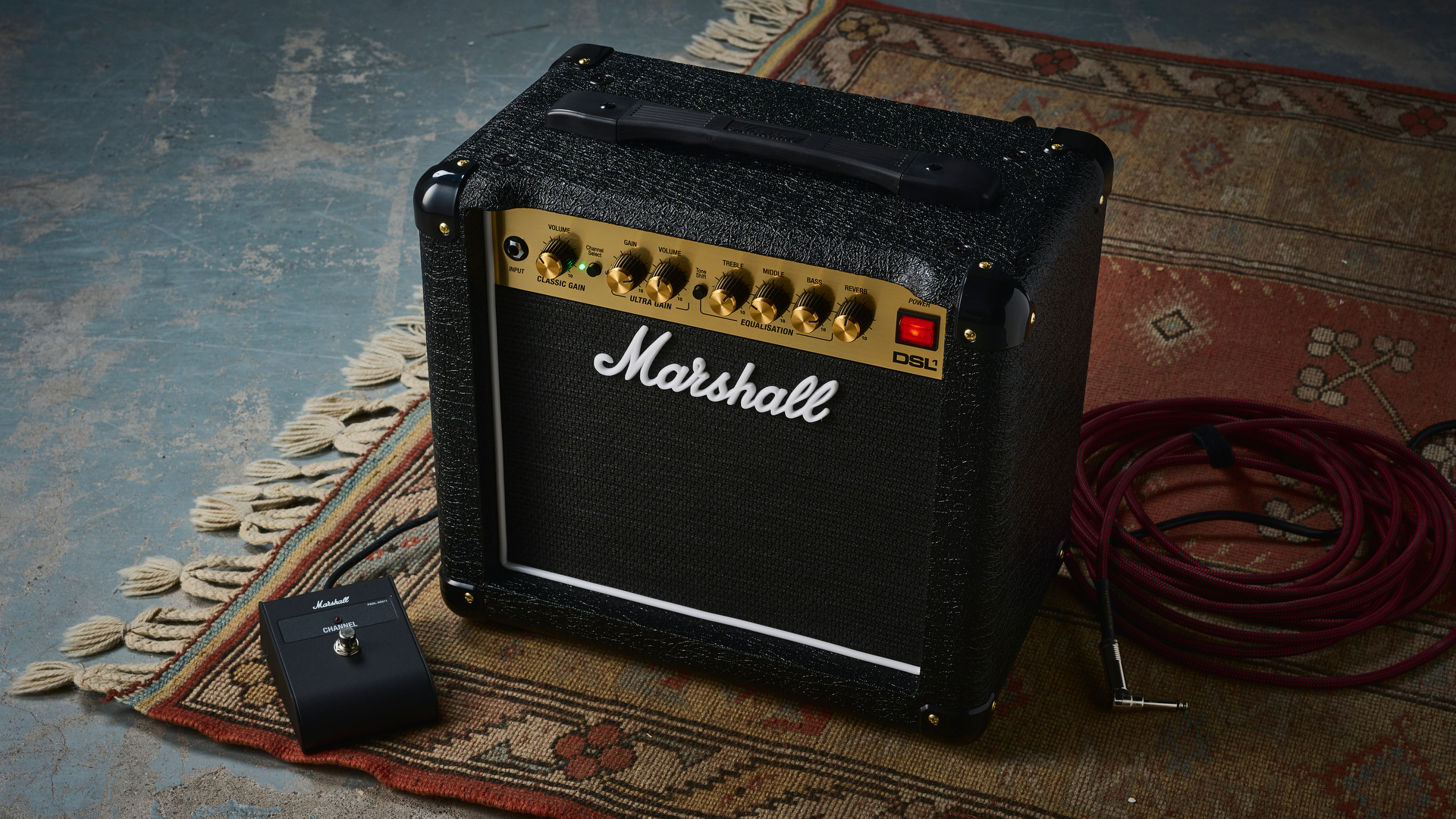
Specifications
Reasons to buy
Reasons to avoid
✅ Buy if you want ultimate tone: As the only pure tube amp on this list, the HT-1R delivers that most sought-after of guitar tones in a beginner-friendly package.
❌ Avoid if you like versatility: You can do a fair bit with the EQ here, but if you're looking for loads of different sounds and effects then this isn't the amp for you.
Build quality ★★★★½
Key features ★★★★½
Performance ★★★★★
Overall ★★★★½
What is it? Marshall’s DSL series has long been a go-to for players wanting a versatile and affordable tube amp that covers everything from tasty cleans to higher-gain chug. The DSL1CR is the smallest in the series, offering 1 watt of power, ideal for getting those coveted cranked-tube tones at house-friendly volumes. With a 0.1-watt power mode, it is my top tube amp recommendation for beginners.
Build quality: The DSL1CR feels like a much more expensive amp than it actually is. Straight out of the box, from the solid handle to the birch plywood cabinet, this compact, stylish combo has all the Marshall style and quality. That classic red power switch, golden control panel, and of course, the famous Marshall logo, this little beauty looks and feels fantastic. I have had one in my house, and even my partner, who has endured a conveyor belt of amps over the years, gave this one a thumbs-up.
Key features: Like most tube amps, the DSL1CR keeps things relatively simple. There are two channels – Classic Gain and Ultra Gain – letting you go from clean to full-blown saturation. A built-in digital reverb runs from subtle to soaked, and a 3-band EQ handles treble, middle, and bass. The tone shift button scoops the mids, offering a more modern EQ curve. I’ve always found it easy to dial in a range of tones, and for beginners who’d prefer fewer distractions, this stripped-back design is a plus. No apps, no screens, just plug in and play.
Round the back, you’ll find the footswitch input, power control, effects loop, and aux in. That power control is key: while 1 watt may not sound like much, this is a tube amp, and compared to digital alternatives, it hits “loud enough” surprisingly fast. Oh, and did we mention that the footswitch comes free with the amp? A lovely touch.
Performance: Out of all the 1-watt tube amps I have tried, the DSL1CR is easily my favorite sounding. The cleans are warm and open, add a splash of reverb and I could play for hours. The Classic Gain channel comes alive when you crank it, and it is everything you want from a Marshall miniature. But the real surprise is the Ultra Gain channel. There is a huge amount of saturation on tap, and I have happily sat there palm-muting for hours with a grin on my face.
Final verdict: If you’re after tons of amp voices, built-in effects, or deep tone editing, this isn’t your amp. But if you want a simple, great-sounding, easy-to-use tube combo that looks as good as it sounds, the DSL1CR is an absolute gem for beginners.
WATCH OUR DEMO VIDEO:

"A brilliant little guitar amplifier for pure tone fiends who don’t want to sacrifice their tubes when playing at home, the DSL1CR delivers an amazing amount of versatility for such a small amplifier. Yes, there are natural low-end limitations to an 8-inch speaker, but I can easily look past these when it sounds this good while practicing in the comfort of my own home."
Read more: Marshall DSL1CR review
Best solid state

Specifications
Reasons to buy
Reasons to avoid
✅ Buy if you want a simple amp: As a solid-state amp there are no fancy models or effects here, but what you do get is a core of great sound without having to cycle through menus or mess with apps.
❌ Avoid if you like a range of voices: There isn't a huge amount of tonal choices with this amp, so not one for those who want to a explore a variety of sounds.
Build quality ★★★★★
Key features ★★★★½
Performance ★★★★½
Overall ★★★★½
What is it? The Debut range is Blackstar’s most affordable; its cream covering and burgundy grille have been a familiar sight for beginners since its release. However, the Debut 50R takes things up a notch. The biggest, and in my opinion, the best-sounding Debut yet, the 50R offers an incredibly straightforward interface designed for minimal fuss but maximum effectiveness.
Build quality: With a 12-inch Blackstar custom-designed speaker and 50 watts of power, the Debut 50R is built to pump out heaps of volume. Available in the classic cream covering and, new to the range, a black version, this amp looks the part. There is an ageing effect on the cream tolex – it is almost wrinkled – that I have always felt gives it a great retro charm.
Key features: With two channels onboard – clean and overdrive – this amplifier is ideal for beginners who want something simple and effective. A bright switch on the clean channel adds some extra jangle, while the overdrive channel can get pretty hairy when dialed in. The ‘R’ part of the moniker stands for reverb, and you get a choice of plate or hall, which brings your tone to life in an otherwise relatively dry amp.
Although the Debut 50R is quite straightforward, I think it’s a fantastic pedal platform. Beginners often lean toward an all-in-one amp with built-in effects, but some are excited by the prospect of building their own sound from the ground up. If you fall into the latter camp, the Debut 50R is a great place to start.
Performance: The first thing I noticed with the Debut 50R is its volume – this thing has a set of lungs. That makes the 5-watt power control switch especially useful for quieter practice. If you like having power waiting in the wings, the Debut 50R is a great choice. The overdrive channel can get a little shrill at higher gain settings, but overall, the bite stays on the usable side. Everything is laid out intuitively, and the absence of flashing lights and digital displays makes a refreshing change of pace.
Final verdict: If you’re a beginner who gets overwhelmed by screens or endless blinking effects, the Debut 50R is your best bet. It is an affordable practice amp that handles pedals incredibly well, and with heaps of volume on tap plus a handy power control, it’s a modest amp that offers more than meets the eye.
WATCH OUR DEMO VIDEO:

"The clincher here is surely the Debut 50R’s asking price. For under $250, all this can be yours, making Blackstar’s new runner practically a dead cert in the race to become this year’s best-selling small combo."
Read more: Blackstar Debut 50R review
Also tested
So there we have it – my top six beginner guitar amplifiers. However, it doesn’t stop there. During my testing process and throughout my day job, I’ve played and recommended many more amps that are great options for beginners. Whether you’re after something compact yet powerful, or you’re all about having a plethora of amp voices on hand, here are a few more honorable mentions.
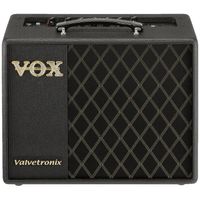
Vox Valvetronix VT20X ★★★★½
A popular option for beginners is Vox’s Valvetronix range. With amp voices modeled on iconic amps like the AC30, 12 built-in effects, and a power control for quiet practice, it is a beginner’s dream. I have always found the VT20X incredibly warm-sounding, largely thanks to the Virtual Elements Technology and a preamp tube, and the tone always goes down a treat with beginners looking for quality and affordability.
Fender Mustang Micro Plus ★★★★★
The Mustang Micro Plus is an awesome practice tool for beginners, and I always recommend it to those needing something silent. With Bluetooth capability, an array of effects, and classic Fender amp voices, all in a small, portable unit, it is a firm favorite for learners who need to keep the volume down.
Read more: Fender Mustang Micro Plus review
Boss Katana-Mini X ★★★★½
The Katana-Mini X is a great option for the learner who doesn’t want the larger Katana 50. This battery-powered desktop amp carries the beloved traits of its bigger siblings, just scaled down: clean, crunch, and brown channels (each with a variation), plenty of Boss effects, and Bluetooth-enabled music streaming and app editing.
Read more: Boss Katana-Mini X review
Blackstar Fly 3 Charge ★★★★★
The Blackstar Fly 3 Charge is the perfect practice amp for anybody short on space. Weighing in at under 1kg, this mini amp delivers a surprising amount of volume through its 3-inch speaker, while the two channels ensure you can alternate between a rich clean sound and something a touch hairier.
Orange Crush 20 ★★★★
While Marshall and Fender are arguably the better-known brands, many players gravitate towards British amp giants Orange for their high-gain needs. Put simply, the gain – or distortion – sound produced by an Orange is quite unlike any other.
Read more: Orange Crush 20 review
How to choose the best beginner guitar amp for you
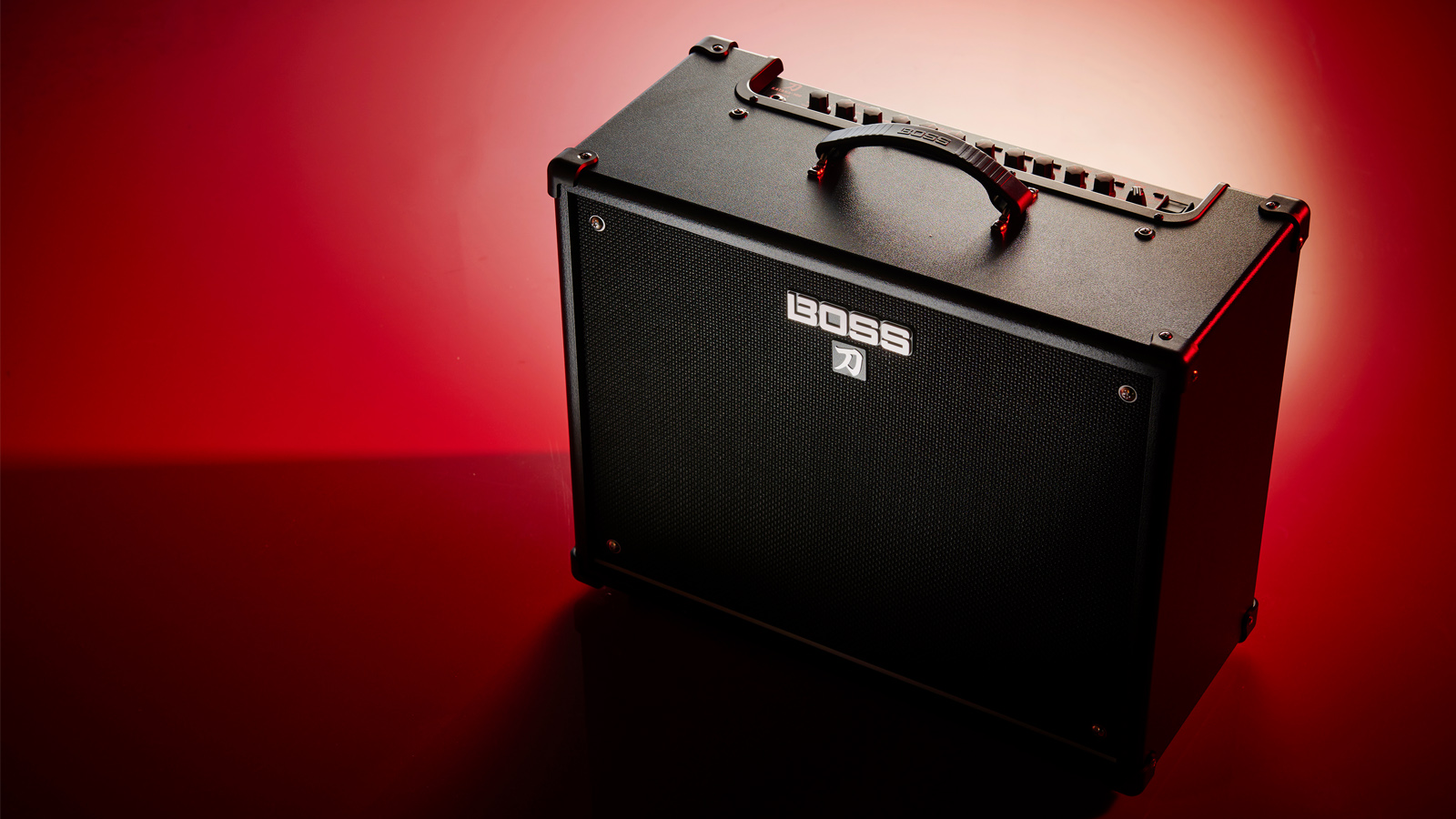
Chances are, if you’re reading this, you’re looking for the best amp option to pair with your beginner electric guitar and if so, it’s your lucky day. I’ve helped hundreds of rookie players choose their first amp during my time working in a guitar store, and I’ve come up with a simple set of guidelines to help you do the same.
Start with size. An amplifier’s output is measured in watts. While it’s not a direct translation, wattage gives you a good idea of how loud the amp will be. Most beginner amps fall in the 10 to 20-watt range, although the hugely popular Boss Katana 50 Gen 3 is a full 50 watts. In general, you won’t need an overly loud amp for home practice. That said, an amp like the Katana 50 gives you more long-term value; it’s powerful enough that you won’t outgrow it quickly, particularly if you start playing music with friends. Many modern amps also have power control settings, letting you reduce output for quieter practice when needed.
Consider usability. Beginners thrive with amps that are quick to set up and easy to use. When inspiration hits, the last thing you want is a complicated interface getting in the way. Amps with clearly labeled voices, effects, and EQ controls tend to be more popular with learners because they get you playing faster.
Look for versatile amp voices and effects. Most guitar teachers cover songs from a wide range of genres and eras, so having amp voices that cover everything from clean tones to crunch and high-gain sounds makes a big difference. Learning Master of Puppets with a clean amp tone is not ideal; being able to dial in appropriate tones makes practice more enjoyable and productive.
Built-in effects are a bonus. You won’t get far learning My Bloody Valentine without reverb, or Nirvana riffs without chorus and overdrive. Having built-in effects lets you experiment with different sounds and learn how they shape your tone, all without needing to splash out on pedals right away.
Bluetooth is a useful extra. While not essential, Bluetooth-enabled amps are becoming increasingly popular with beginners. Not only do they let you jam along with songs or backing tracks, but they also double as speakers, making them useful even when you’re not playing guitar.
FAQs
What makes a great beginner amplifier?
A great beginner amplifier should be reliable and straightforward; no beginner should have to deal with complexities that can get in the way of playing or have to overcome any additional challenges on top of practicing and developing their playing skills.
The most important thing that any beginner amplifier should do is inspire its owner. A guitarist’s first few years of playing are the most fragile and it is crucial to make guitar playing as exciting and engaging as possible; a bad amplifier might just be the thing that turns them off playing.
What should I consider when buying a beginner guitar amp?
Starting to learn the guitar can be expensive, and buying add-ons such as effects pedals and tuners can bump that cost up considerably, so consider an amp that has features such as integrated effects – we would say that reverb is a must, but additional effects such as delay and modulation are also great additions – and a built-in tuner. You can always add more pedals or an external tuner down the line, but having some built-in effects to begin with is a great way to explore different tones and styles.
Also, having an amp that has plenty of amp voices and covers basic tones – clean, overdriven and high-gain – will ensure you are maximizing your practice. Most learners will play their favorite songs, or those recommended by a teacher, so having an amp with a voice that sounds similar to the song you’re learning will encourage and get you closer, quicker.
If your goal is to start recording your own music, some amps have integrated audio interfaces, which means you can connect them up to a computer and easily record yourself playing. These will typically be a little more expensive than the most budget-friendly beginner amplifiers; however, if you know this is your long-term goal it may work out more cost-effective than buying an amp, a separate audio interface, plus a microphone, and the result will be better-recorded tones.
What type of music do you play?
To pick the best beginner guitar amp for you, you’ll need to make a few considerations. First off, what sort of music do you want to play? If you’re into rock and metal, then you’ll want an amp that’s got a good overdriven or distorted sound. Most beginner amps do offer this, but it’s worth keeping an eye out. If you’re more bothered about a good clean tone, then you don’t need an amp with various levels of overdrive.
Many of the best beginner amps are modelling amps – that is, they aim to replicate the sound of a bunch of other, much more expensive amps. These are versatile and offer a wide array of tones, plus they usually come with lots of different effects built in. So, if you’re into a range of genres, and might flit from classic rock to country, then to blues and even heavy metal, a modelling amp could be ideal for you.
How many watts does my beginner guitar amp need?
Next, you’ll need to look into the wattage. The wattage of the amplifier determines how loud it is, so you will know straight off the bat whether it’s a pure practice amp for the bedroom, or if it will be able to handle small live shows.
Beginner guitar amps ordinarily sit in the range of 10 to 50 watts, with 10 being more suited to playing at home, while 50 will offer up enough power for smaller live shows. Tube amps have a much higher perceived volume, so a 5-watt tube amp will compete with a 40-50-watt solid-state amp.
Also, there are many modern beginner amps that have built-in power controls. Take the Boss Katana 50 Gen 3 for example – although it operates at 50 watts full power, you can reduce it to 25 watts and even to 0.5 watts for quieter, at-home practice.
How big should my beginner guitar amp be?
This is another important question to ask yourself. There is no right or wrong answer, as everyone needs different-sized amps to meet different criteria. You should consider where you're going to keep it, where you'll be using it and whether you'll be leaving it always set up or packing it away after use.
We'd usually recommend getting something with the biggest speaker you can afford. Something like a 10" or 12" speaker will help you to obtain a full range of frequencies from your amp. However, there are options like the Yamaha THR10II that, while having much smaller speakers fitted, are able to produce a full tonal range down to a pair of specially designed speakers. It won't kick out the same gutsy tone as a 1x12", but then it's not really meant to.
The physical size of the amp ties in with speaker size nicely. A larger amp will allow for more resonance and sometimes a fuller tone, but can be inconvenient if you're limited on space. As long as you consider the size and power you realistically need, and choose an amplifier that gives you the flexibility to try out different sounds, you'll be sure to find the perfect home practice companion.
What type of beginner amp do I need?
Beginners may not realize there are different types of amplifiers, all with their own positives and negatives, and some are better suited for beginners.
One type of amplifier you may have heard about is tube, historically favored by pros, with lots of great character – in fact, many non-tube amplifiers are designed to mimic the sounds of tube amplifiers. There are, however, many drawbacks of tube amplifiers that make them less ideal for beginners.
They typically sound at their best when cranked and kicking out some substantial volume, which even low-wattage tube amplifiers can produce. This isn’t ideal for beginners, many of whom will be using their amplifiers at home, where that volume level isn’t always appropriate. So, in reality, the hallowed tube amplifier tone might not be unleashed, and non-tube amplifiers would sound better for home use. Tube amplifiers are also prone to reliability issues. No beginner wants their amplifier to suddenly stop working and then have to find a fix.
An amp type that keeps the organic, analog-style of tube amplifiers but is less susceptible to breaking is solid state, such as the Blackstar Debut 50R. These are among the simplest amps around, making them ideal for beginners. They often pack a punch in terms of volume and have great tones, though they may not be the most versatile. These are far more reliable, and it’s common to see solid-state amps last for years without any significant faults.
If versatility is on the agenda, I would suggest looking at digital modeling amplifiers, which will typically have several, sometimes many, amp models built in. An amp model is an interpretation of an amplifier's sound — for example, a classic Marshall, Fender, or Vox – which has been designed by experts to sound similar to the real thing.
The ability to change models means you can essentially ‘change amplifiers’ and experience lots of different styles, all from the same amp. Modeling technology has evolved quickly in the last 20 years, with modern modeling amps both very affordable and of superb quality. If I had to choose one type of amp that would suit beginners, modeling would be my suggestion, as it allows you to explore a variety of tones.
Bear in mind that this is only your first amp! There is always a chance to expand your amplifier stable, but if you buy well, there’s no reason a beginner amp can’t remain useful, even once you become a seasoned pro.
Is connectivity important for beginner amps?
When starting out on the guitar, you might want to play along with songs, backing tracks or use resources on YouTube, etc. Luckily, many of the best beginner guitar amps have connections for plugging in your phone or tablet, so you can run everything through one speaker. Some even feature Bluetooth so you can do it cable-free.
Recording yourself and listening back is one of the best ways to improve your playing, too, and there are a bunch of options in this guide for recording to a laptop or computer. This will aid your songwriting skills too, allowing you to share ideas with potential bandmates and develop your ear for chord changes and soloing.
Many modeling amplifiers come with native software too, which lets you make deep edits to sounds, download updated amp models, and even curate presets from famous guitar players. A great beginner's choice that offers all of these features is the Positive Grid Spark Mini – a compact, versatile, Bluetooth-enabled desktop amplifier with sounds that you can edit on PG's proprietary Spark app, alongside other practice-friendly features like Smart Jam for improving timing and rhythm.
Glossary
Read something in this guide that you don’t understand? I’ve rounded-up and explained all the key terms relating to beginner amps so you can become an instant expert:
Amp voice: A beginner amplifier tends to have multiple amp voices. These are modeled channels designed to replicate specific amplifier tones, such as clean, crunchy, or high-gain.
Combo amp: A type of amplifier that houses every component of an amp, including the preamp, power amp, and speaker. Most beginner amps are combo amplifiers.
EQ (Equalization): EQ controls shape your tone by adjusting specific frequencies, typically labeled as bass, middle, and treble. They either boost or cut those frequency ranges.
Gain: The gain control determines how much signal enters the preamp section of an amplifier. Increasing the gain can push your amp into overdrive or distortion.
Modeling: A modeling amp uses digital signal processing to replicate the sound of classic tube amplifiers. These digital models aim to mimic the tone and response of real analog gear.
Modulation: A type of effect that alters your signal’s properties. Common modulation effects include chorus, flanger, and phaser, which modify the waveform to create movement and texture.
Overdrive: A form of distortion that simulates the sound of a tube amp being pushed hard. It produces a gritty, crunchy tone often used in rock and blues.
Power control: Also known as an attenuator, this feature allows you to reduce an amp’s power output. It helps maintain great tone at lower volumes, perfect for home use.
Preset: A preset is a preconfigured amplifier setting, often combining amp voice, EQ, and effects. Beginners can use presets for instant, genre-specific tones.
Watt: The unit of measurement that indicates an amplifier’s power output. While other factors also affect volume, wattage gives a good indication of how loud an amp can get.
How I tested the amps in this guide
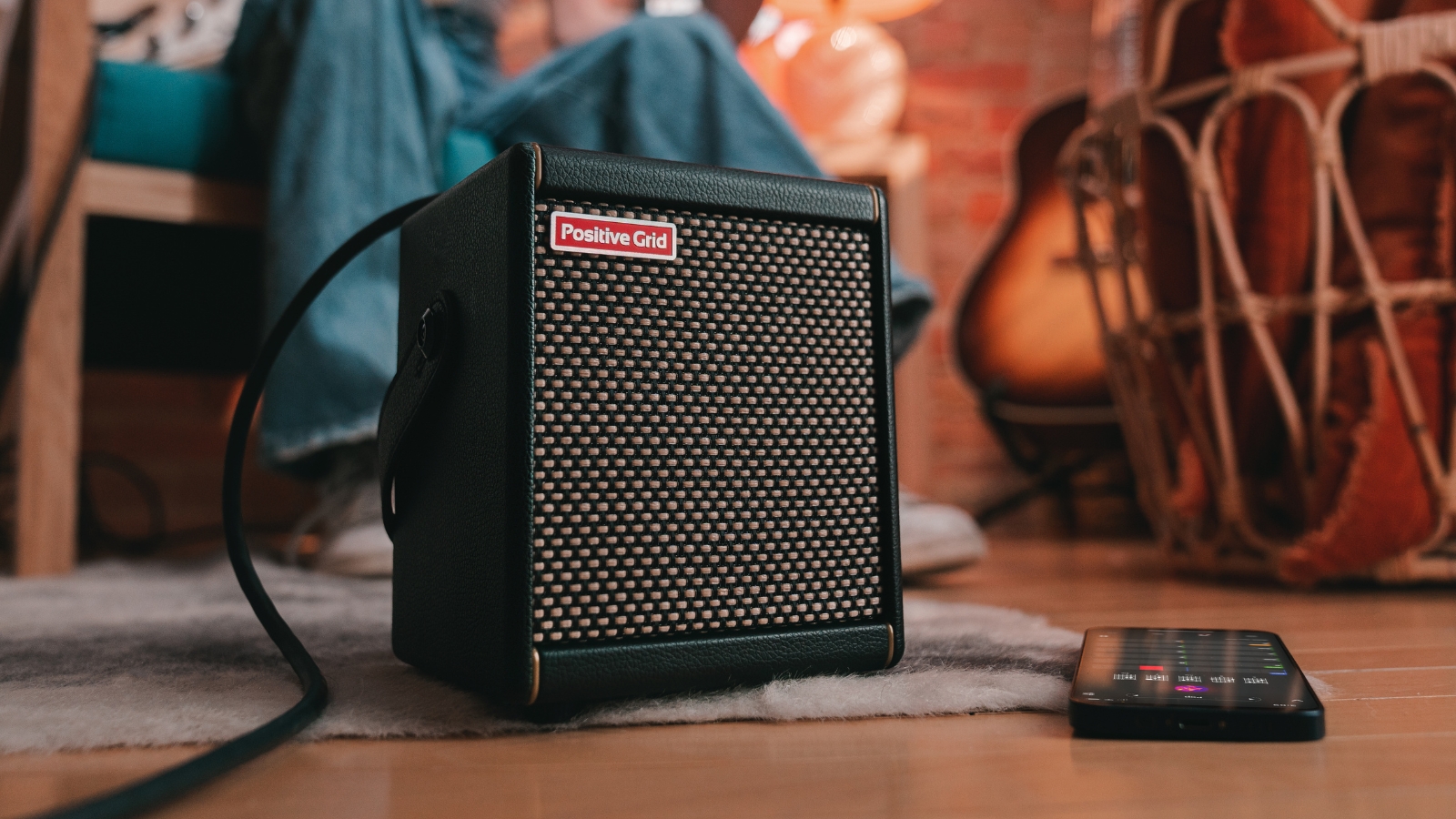
Having played electric guitar for over two decades, I take a strict and thorough approach when reviewing, testing, and recommending beginner guitar amplifiers. By recalling my own learning days and putting myself in the shoes of someone new to the instrument, I focus on the key factors that matter most to beginners and test various aspects of each amp accordingly.
Build quality: Firstly, when I unbox an amplifier, I check the overall build quality. Beginner amplifiers tend to lean toward the affordable side, but there are still common pitfalls I look out for. I pay close attention to the hardware, ensuring the control knobs aren’t too loose, sticky, or scratchy while the amp is on. I will check the finishing whilst keeping an eye on the covering and I will check to see if the cabinet is solid and has been put together well.
When playing, it’s important to check for any loose parts that rattle at higher volumes, or unwanted buzzing or interference when cycling through the different amp voices. From my experience, beginners appreciate amplifiers that are lightweight and portable, whether for lessons or jamming at a friend’s house, so the weight is something I factor into my tests.
Key features: I have found that the best beginner amps include a few essential features. Firstly, a solid variety of amp voices to suit the range of songs beginners typically learn is a must. A beginner amp will score highly in my book if it covers three key tones: clean, crunch, and high-gain. During testing, I cycle through each voice to ensure there’s enough variety for a learner to get good mileage from the amp.
Next, I consider the built-in effects. Like amp voices, having a healthy selection of usable effects, ideally with simultaneous use, helps a beginner learn what different effects sound like, what pairs well, and how to emulate their guitar heroes.
Anything beyond that is a bonus. Many modern amps now pair with editing apps, offer Bluetooth streaming, or are battery-powered. From what I have experienced, beginners appreciate those added features, but they aren’t essential.
Performance: Lastly, performance is a vital testing point. The last thing a beginner needs is a complicated amp that kills their inspiration. A well-laid-out control panel, easily accessible amp voices and effects, and a simple plug-in-and-play experience are all things I value highly. If an amp relies on an app for tone editing, I download and test it thoroughly, rating how easy it is to use, save patches, and explore new sounds. Of course, when I plug in, I will listen to the overall quality, considering if there is a well-balanced tone, without any particular frequency sticking out and becoming too overwhelming.
Read more about Guitar World's rating system, how we choose the gear we feature, and exactly how we test each product.
Why trust us
✅ A global audience of 3.8 million guitarists monthly
✅ 1,200+ reviews on GuitarWorld.com
✅ 30+ years of product testing at Guitar World
Guitar World boasts over 44 years of expertise and stands as the ultimate authority on all things related to guitars. The magazine and website feature expertly written gear round-ups and top-quality, authoritative reviews penned by a team of highly experienced industry professionals.
Guitar World's inaugural print issue hit the shelves in July 1980, and ever since, it has been captivating players and enthusiasts with engaging lessons, insightful interviews with the most prominent guitar heroes, and priceless buying advice for newbie players.
Furthermore, GuitarWorld.com continues this legacy online and serves as the hub of the world's foremost authorities on guitar playing. The site not only hosts content from Guitar World but also showcases articles from respected publications such as Guitarist, Total Guitar, Guitar Techniques, and Bass Player. With a reach extending to 3.8 million players each month, GuitarWorld.com is a go-to destination for guitar fanatics globally.
Read more:
You can trust Guitar World
- Best beginner guitars: great acoustic and electric options
- Best budget guitar amps under $500
- The best tube amps under $500
- The best gifts for guitar players
All the latest guitar news, interviews, lessons, reviews, deals and more, direct to your inbox!
Ross has been a music lover and guitar player since the age of 8. He has spent the five years since graduating from university working in music retail, selling guitars, amps and more. Ross is particularly interested in electric guitars, pedals and amplifiers and his current rig includes a trusty 2009 American Standard Stratocaster and Vox AC30S1 with a few Walrus Audio and Way Huge pedals in between.
- Matt McCrackenJunior Deals Writer
- Richard Blenkinsop
- Chris Corfield
- Daryl RobertsonSenior Deals Writer
